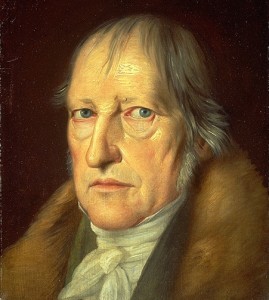Northern zone
In this region handicrafts are mainly characterized for being made from lama or alpaca wool. Ponchos, hats and rugs are mainly made with this raw material. Culebrillas (adornments) and ikis –a kind of brown colored blanket- are also made here.
Different figures are made from stone, such as women using a loom and representations of churches or animals. In a few zones of the region of Antofagasta like Talabre and Caspana, furniture, treys, churches and other things are made in cactus wood.
Further south, elements are made from totora (a plant fiber), such as baskets, bread baskets and decorations like fish or animals that are common to the area.
In the Elqui valley (region of Coquimbo) there is a town known as Chapilca, where textile handicrafts are manufactured using a knotting technique, also known as ikat. Bedspreads, bed rugs or ponchos are made, which are dyed with plant colorants.
In the town of Combarbala we may find figurines made out of combarbalite. The most typical objects made out of this material are ashtrays, candleholders and glasses.
In addition, pitchers, bowls and zoomorphic (in the shape of animals) figures are made out of pottery clay, which are influenced by diaguita pottery. Black, white and brown colors are predominant in these objects.
Handicrafts of Central Chile
They are used to make bread baskets, placemats, baskets and sowing kits.
Near this sector, in Lindura Bajo (near Hualqui), another type of basket making takes place, made from wheat straw.
In Quinchamali, near Chillan, decorative figurines are made in clay. They are left black after being burned in red hot heat and then passed through wet straw. They are characterized for having geometric drawings in white.
The most common pieces are guitar cases, mate drinkers, animal shaped piggy banks and a dug shaped jug. A non traditional handicraft industry takes place in Coronel: miniatures or replicas of Christ introduced into a bottle using threads.
The basket making of Hualqui is based on coiron or dry chupon (a plant fiber) which is dyed in bright colors. In the region of Biobio, in Minas del Prado (near Coihueco), knotted rugs or bed rugs with geometrical figures are made in looms.
Pilen metalwork, which is only done by women, is characterized for using red clay. It is used to make figures like pails, bowls, pots and jugs; which are made in great fires in the ground. In the town of Chimbarongo, baskets, chupallas (straw hats), chairs, tables, among others, are made out of wicker (a plant fiber). In addition, in Lihueimo, near Santa Cruz and Palmilla, figurines are made in clay, like dancing huasos and chinas and nativity scenes.
In the town of Lajuela, also in this sector, the traditional huaso hats are made. They are made with a braiding of seven to twelve straws.
In the region of Maule, specifically in Rari, decorative figures are made using horse mane which are painted with anilines. The most purchased objects are flying witches, flower bouquets and butterflies. In Linares, stirrups are made, a fundamental piece when the huaso is horseback riding. Soapbark wood is used to make them. Handicrafts are made in white clay and clay in the region of Valparaiso, like ocarinas, as well as seashells and pebbles, such as necklaces and figurines. Work is also done in leather, which is later treating with lime to give it a whitish color and a certain stiffness. Purses, wallets, among others things, are made from this material.
In Pomaire, a town in the Metropolitan region, a great amount of utensils for home use and decoration like pots, jugs, plates, treys, candleholders, etc. are made from clay. Metals, such as copper, bronze and cast-iron, are also worked on in this zone. They are used to make ashtrays, jugs, lamp tables, etc.
In Doñihue (region of O’Higgins) looms as well as wool and silk threads are used to manufacture shawls worn by huasos for dancing cueca or participating in rodeos. They are characterized by their striped design and the symmetrical lines that run across the back and front or for bearing designs that are typical of our country, like the Chilean bell flower and the grape.
Southern zone
Mapuche artisans are characterized for fabricating objects in wood, stone, clay, wool, boqui pil-pil fiber and silver.
In Liquiñe, plates, spoons, ladles, bowls, treys, etc. are made out of wood.
Near Temuco, in Metrenco, objects are made in stone, like mortars and sculptures that represent this people.
Clay pottery is slowly starting to disappear, and zoomorphic figurines are still made in only a few sectors, like Roble and Huacho.
In Trarihue, sashes are made that are 10 centimeters wide and 2 to 3 meters long and decorated with anthropomorphic (human appearance) and zoomorphic figures.
The material used for basket weaving in Mehuin Bajo is called boqui pil-pil and it is gathered from the native forest and then soaked in water for several days in order to strip it of its dark bark, with only the fiber remaining. The objects obtained from this material can have domestic or decorative uses.
Mapuche silverwork is the most well-known by tourists and people in general. It began with the melting down and hammering of coins. They provided prestige and showed the status of the man and his women within this people’s social structure.
Presently, the most common and well-known jewels are:
– Lloven: knitted ribbon hhoked to silver circles that are placed on the head.
– Tupu: great silver pin that is used as a broche on the mapuche woman’s chamal.
– Trapelacucha: chest plate that has several links that end up in a cross.
– Kilkai: chest chain that is fastened on the shoulders and is made out of wool or cotton. Silver circles hang on the Kilkai.
– Chawai: round or square earrings with an arch that is used to hold up the piece and make it a single piece.
Chilote handicrafts
Chilote handicrafts are mainly characterized by the textiles and looms that are made in Quinchao, Chaigüe and Llingua. They use sheep’s wool and the knitting technique is called three stitch. The most common pieces are rugs, blankets, skirts, socks, sweaters and hats. Plants are also used for the knitting, like junquillo, manila or pita, chupon, ñapu and boqui.
In Ancud there is a handicraft industry based on gluing the seashells of mussels, locos, sea snails, etc. marine figures are represented: fish, seals, sea lions, etc.
In Curaco de Velez, a port near Quinchao, a musical instrument is fabricated known as the violin campesino (peasant violin). It has three strings, but they are shorter than the typical violin’s.
It is the only zone where the instrument continues to be made and played popularly.
Basket weaving in Chiloe is made from fibers of ñapu, manila, quilineja, boqui, ñocha and quiscal. They have domestic and decorative ends. Hence the bird feeders and baskets.
On a different subject, one may find beautiful wood carved replicas of the island’s most used means of transportation, the chilote dinghy (sail or motor).
In the region of Aisen, handicrafts are made from clay and leather. The highest level of development has been attained at Puerto Ibañez.








